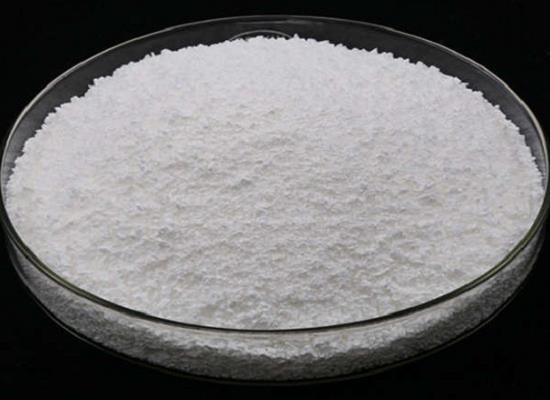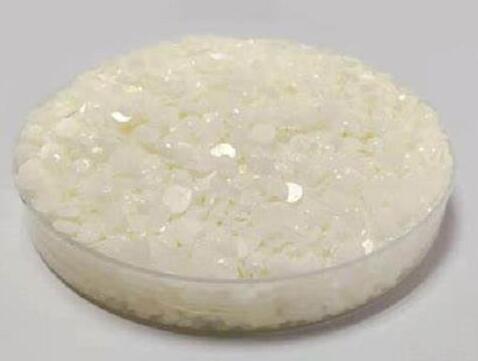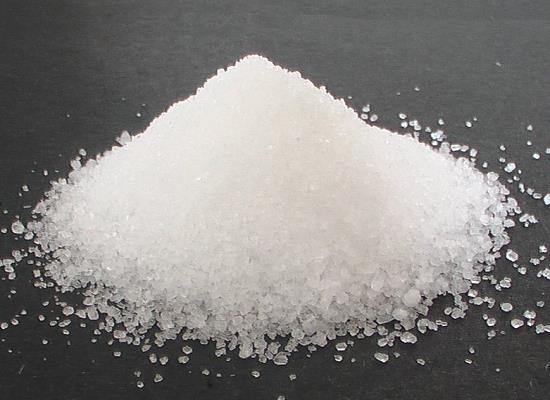Pyromellitic Dianhydride: A Promising Candidate for Creating Functional Carriersbility and Safety
Jan 3,2024
General Description
Pyromellitic dianhydride is a white, hygroscopic crystalline powder and moderate lipophilicity. It has a boiling point range of 397-400°C, a melting point of approximately 286°C, and is soluble in some organic solvents but reacts with water. This compound has been used to synthesize water-soluble cyclodextrin (CD) polymers, namely pHPβCD and pMβCD, which showed increased drug solubility and improved safety profile for antiretroviral drug delivery systems. However, it poses safety hazards such as skin and respiratory irritation, allergic reactions, and potential pulmonary hemorrhage. Caution and appropriate safety measures are recommended when handling this compound.

Figure 1. Pyromellitic dianhydride
Physical and Chemical Properties
Pyromellitic dianhydride is a white powder with a molecular weight of 218.12 g/mol. It belongs to the chemical class of acid anhydrides, specifically cyclic acid anhydrides. The compound has a relatively low XLogP3-AA value of 0.7, indicating moderate lipophilicity. It does not contain any hydrogen bond donors but has six hydrogen bond acceptors. Pyromellitic dianhydride does not have any rotatable bonds and has a topological polar surface area of 86.7Ų. It consists of 16 heavy atoms and has a formal charge of 0. In terms of physical properties, pyromellitic dianhydride is a white hygroscopic crystalline powder with a characteristic odor. It has a boiling point range of 397-400 °C and melts at approximately 286 °C. The compound is soluble in some organic solvents but undergoes a reaction when exposed to water. Its density is 1.68 g/cm³, and it has a vapor pressure of 0.0000048 mmHg. The estimated logP value is 2.14, indicating a moderate potential for partitioning between organic solvents and water. Additionally, the compound has a Henry's Law constant of 7.5X10-9 atm-cu m/mole at 25 °C, suggesting a low volatility. The hydroxyl radical reaction rate constant is estimated to be 2.9X10-13 cu cm/molecule-sec at 25 °C. 1
Pyromellitic Dianhydride-based CD Polymers for Antiretroviral Drug Delivery
Pyromellitic dianhydride has been utilized in the synthesis of water-soluble cyclodextrin (CD) polymers for various applications. In this study, Pyromellitic dianhydride was crosslinked with two CD derivatives, methyl-β-CD (MβCD) and (2-hydroxy)propyl-β-CD (HPβCD), to create functional sub-micron sized carriers for antiretroviral drug delivery systems. The CD polymers, namely pHPβCD and pMβCD, were successfully synthesized and thoroughly characterized. Physicochemical analysis confirmed the formation of sub-micron sized particles, resulting in a substantial increase in the solubility of the model drug, lopinavir (LPV), by 12-14 times. Cytotoxicity assays demonstrated that both pHPβCD and pMβCD improved the safety profile of LPV. Additionally, antiviral activity assays revealed that both polymers exhibited concentration-independent anti-HIV-1 effects. pHPβCD showed a reversed dose-response profile of LPV after loading, while pMβCD maintained its dose-independent profile with an LPV-mediated increase in viral inhibition. Moreover, drug-loaded pMβCD demonstrated its potential as functional sub-micron sized drug delivery polymers, achieving synergistic anti-HIV activity. Overall, this study highlights the successful synthesis of water-soluble CD polymers by crosslinking Pyromellitic dianhydride with MβCD and HPβCD. These polymers not only enhanced the solubility and safety profile of LPV but also exhibited promising anti-HIV-1 activity. The findings suggest that pHPβCD and pMβCD have potential applications as efficient drug delivery systems for antiretroviral therapy. 2
Safety Hazards Associated with Pyromellitic Dianhydride
Pyromellitic dianhydride poses several safety hazards. The compound may cause an allergic skin reaction, and it is a skin irritant that may cause skin sensitization and asthma. It is also a respiratory irritant that may cause allergy or asthma symptoms or breathing difficulties if inhaled. Additionally, heavy exposure may cause pulmonary hemorrhage. Pyromellitic dianhydride reacts with water to produce acid, which can further exacerbate skin, eye, and respiratory tract irritation. It may also cause serious eye damage and may cause sensitization by skin contact and inhalation. Changes in various enzyme activity have been observed in animals administered the compound for six months. The physiological effects generally resemble those of the corresponding acids, but pyromellitic dianhydride is a more potent eye irritant in the vapor phase and may produce chronic conjunctivitis. Therefore, caution should be exercised when handling this compound, and appropriate safety measures should be taken to minimize exposure. 3
Reference
1. Pyromellitic dianhydride. National Center for Biotechnology Information (2023). PubChem Compound Summary for CID 6966.
2. Adeoye O, Bártolo I, Concei??o J, da Silva AB, Duarte N, Francisco AP, Taveira N, Cabral-Marques H. Pyromellitic dianhydride crosslinked soluble cyclodextrin polymers: Synthesis, lopinavir release from sub-micron sized particles and anti-HIV-1 activity. Int J Pharm. 2020 Jun 15;583:119356.
3. PubChem Annotation Record for PYROMELLITIC DIANHYDRIDE. National Center for Biotechnology Information, 2023), Source: Hazardous Substances Data Bank.
- Related articles
- Related Qustion
- Pyromellitic Dianhydride: Applications in Wastewater Treatment and its Preparation Method May 10, 2024
Pyromellitic Dianhydride, synthesized from 1,2,4,5-Benzenetetracarboxylic Acid, plays a crucial role wastewater treatment.
- Pyromellitic dianhydride: applications and toxicology Jul 20, 2023
Pyromellitic dianhydride has various applications in polymer synthesis, wastewater treatment, solar cell fabrication, but it also has toxicity concerns.
- What is Pyromellitic Dianhydride? Dec 30, 2019
Pyromellitic dianhydride (PMDA) is an organic compound with the formula C6H2(C2O3)2. It is the double carboxylic acid anhydride that is used in the preparation of polyimide polymers such as Kapton.
4,4'-Methylenedianiline(MDA) is primarily used to produce 4,4-'methylenedianiline diisocyanate and other polymeric isocyanates which are used to manufacture polyurethane foams.....
Dec 10,2024Organic ChemistrySodium thiocyanate is a white crystalline powder and highly soluble in water, ethanol, and acetone. It has various industrial applications but poses health risks and environmental hazards.....
Jan 3,2024APIPyromellitic Dianhydride
89-32-7You may like
Pyromellitic Dianhydride manufacturers
- Pyromellitic dianhydride
-

- $0.00 / 25Kg/Drum
- 2025-10-30
- CAS:89-32-7
- Min. Order: 1KG
- Purity: 99%
- Supply Ability: 500mt/year
- Pyromellitic Dianhydride
-

- $10.00 / 1KG
- 2025-10-21
- CAS:89-32-7
- Min. Order: 1KG
- Purity: 99%
- Supply Ability: 10 mt
- 1H,3H-Benzo[1,2-c:4,5-c']difuran-1,3,5,7-tetrone
-
![89-32-7 1H,3H-Benzo[1,2-c:4,5-c']difuran-1,3,5,7-tetrone](/ProductImageEN/2023-04/Small/d45dde99-3bfa-4000-ab5a-3b78cca8b746.jpg)
- $458.00 / 10g
- 2025-10-16
- CAS:89-32-7
- Min. Order: 1g
- Purity: 0.95&0.99
- Supply Ability: 1000






